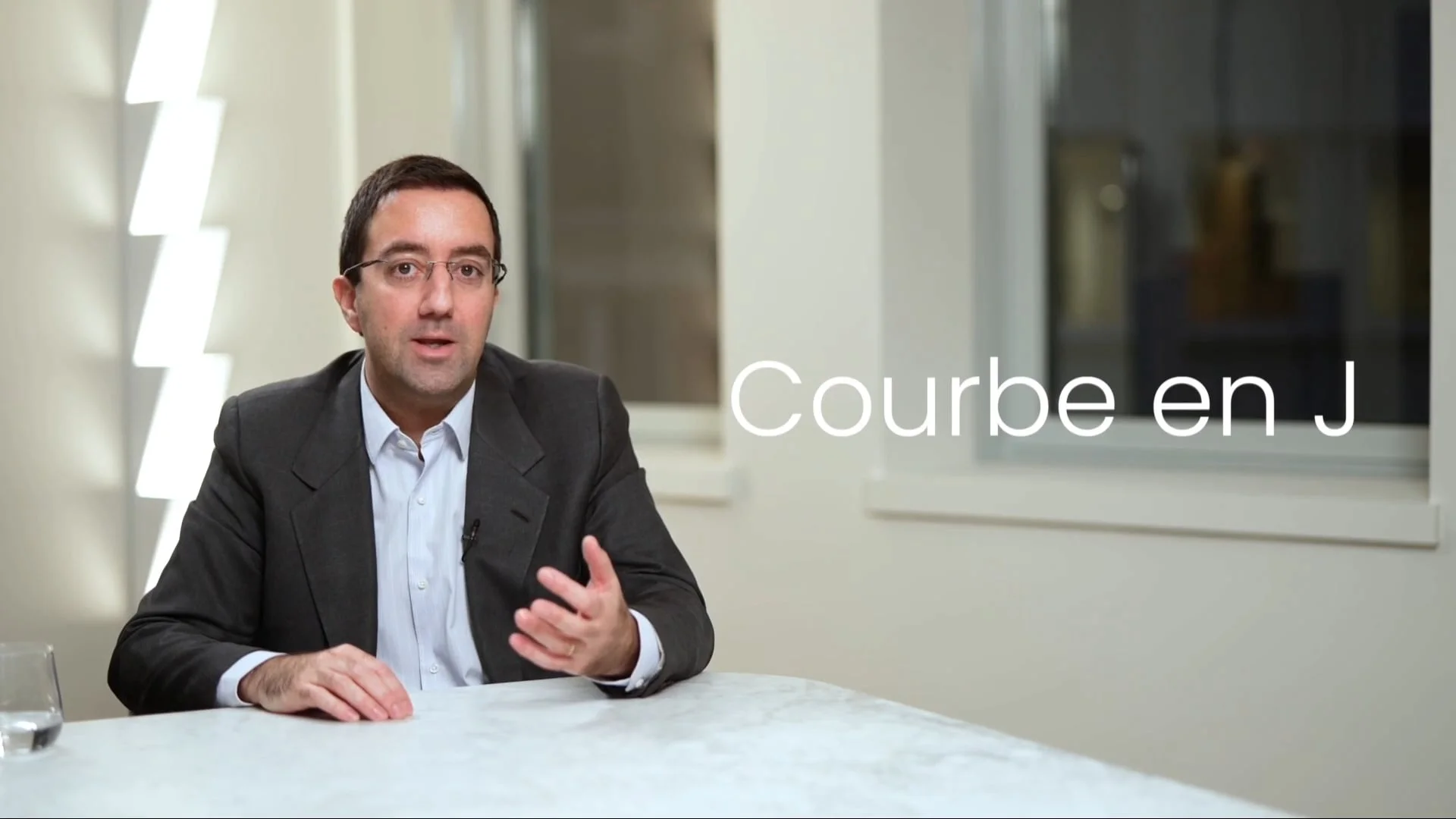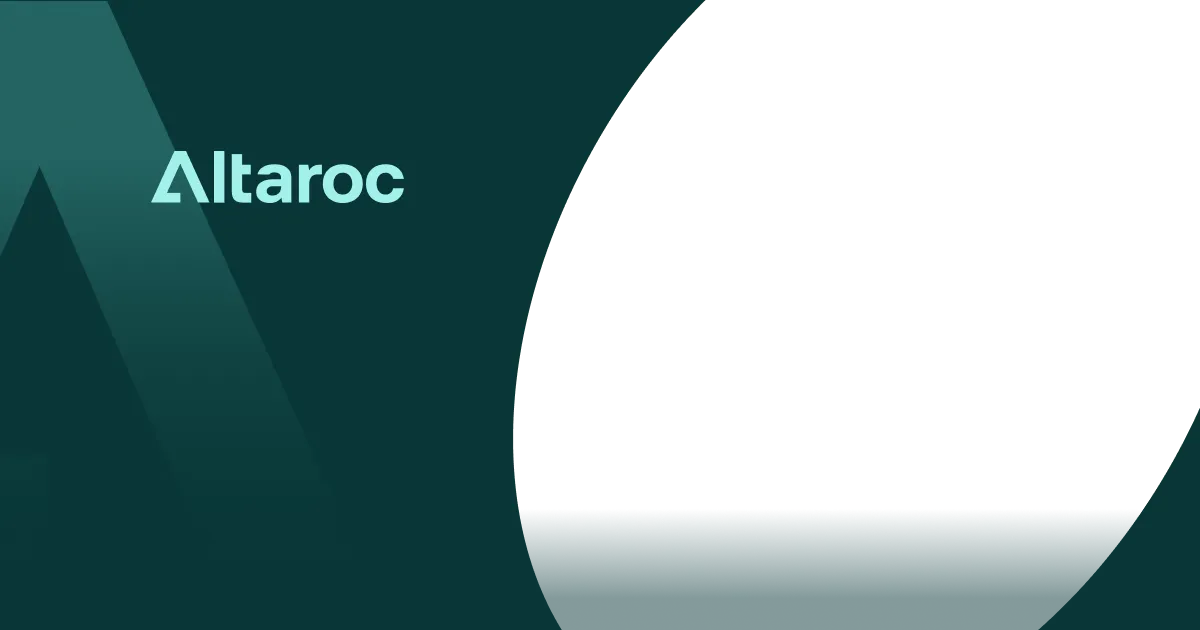The J curve
Summary
Written transcription
Louis Flamand: Maurice explains the famous J-curve phenomenon at every webinar presenting the results of the Altaroc vintages. It's something I've been confronted with throughout my career in private equity. I constantly had to re-explain to senior management the effect of the J-curve on a fund's net performance at the beginning of its life. When you work in private equity, you're familiar with this subject, but when you don't work in private equity, you understand the J-curve effect when it's explained to you, but you tend to forget it pretty quickly. This J-curve phenomenon is present in all institutional portfolios, even the best in the world. It is purely mechanical, and is linked to the fact that, at the start of a fund, the weight of fees is high on a fund with few investments. As the fund expands into more investments, the weight of fees will diminish, and will be amortized by asset appreciation from the 12ᵉ month mark. But rest assured, there are 60 years of institutional history in the private equity world, and it's been 60 years since the J-curve still surprises some. It's perfectly normal and totally mechanical. As a reminder, a private equity fund lasts ten years. It has a five-year investment period, during which it builds up its portfolio, and then a five-year divestment period. Let's focus on the investment period, by way of an example. A fund of size 100 is invested over five years at a rate of 20% per year.
Louis Flamand: At the end of year 1, the fund had only invested 20. At the end of year 2, it has invested 40, at the end of year 3, 60, and so on. Next, let's assume that the fund will take 2% of its fund size of 100 in management fees each year. Clearly, at the beginning of the fund's life, the weight of its management fees is high as a % of the amount invested by the fund, but falls as the investment period progresses. This means that the impact of management fees on the fund's net performance will diminish over time, as the value of investments increases. To illustrate this J-curve phenomenon, we can show you the curve of one of our portfolio managers' historical funds over its 2001 vintage, from September 2001 to June 2003. For almost two years, the fund's net performance was negative - its net-of-all-costs multiple was less than one - due to this J-curve effect. Yet it generated a final performance of three times its net-of-all-costs multiple. The question we're sometimes asked is why? Are management fees calculated on the basis of the commitment if the portfolio is not yet fully invested? In fact, the J-curve is primarily created by the fact that, in private equity, management fees are charged on the basis of the total size of the fund, i.e. all investor commitments during the investment period.
Louis Flamand: These fees enable the teams to carry out their optimal search for investment opportunities, as well as their due diligence on complex assets that are difficult to access because they are unlisted. The teams are therefore remunerated for building and managing the fund's entire portfolio. If fees were calculated on the amount invested, this could motivate the manager to rapidly deploy his fund to increase his management fees. This could lead to a lack of discipline, which could have a much greater negative impact on the Fund's final performance. If fees were calculated on the basis of revalued net assets, the manager would also be encouraged to invest more rapidly, and even to value his assets more aggressively, by charging his management fees on a fixed basis. During the investment period, the manager is de facto encouraged to smooth his investments over several years to gain exposure to several entry points, and to value his holdings conservatively. There is no financial incentive to accelerate the pace of investment, and a potential lack of discipline after the investment period. Fees are then calculated on the amounts invested in holdings that have not been sold. Fees are therefore degressive, decreasing as investments are sold. The teams do not receive any fees for managing divested investments. I sometimes hear it said that the advantage of secondary private equity funds is that there is no J-curve.
Louis Flamand: In effect, secondary funds buy investors' positions in funds, usually at a discount, which in accounting terms translates into an immediate upward revaluation of their investment, since the revaluation is immediate. The annualized IRR initially appears high, but this bonus effect only occurs once. The IRR of a secondary fund then declines significantly over time. As you can see from the J-curve on the graph that appears on the screen because of the J-curve, primary funds have a negative initial IRR, which then improves as investments are made, revalued upwards and then sold. In multiple terms. Now, because of the immediate revaluation, secondary funds that buy at a discount at entry have a favorable investment multiple in the early years. Primary funds, on the other hand, are subject to the J-curve, with an unfavorable multiple at the outset. Over time and by design, a good primary fund more than compensates for this discrepancy, and will typically target a final performance of twice the net investment or even more, whereas secondary funds of comparable quality will deliver 1.5 times the net investment. These analyses explain our strategic choice to concentrate our vintages on top-tier primary funds, since our ambition is to deliver optimized performance over time, not in the short term.









